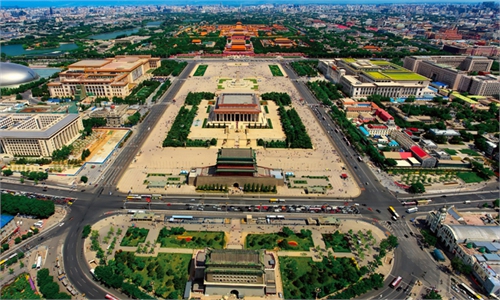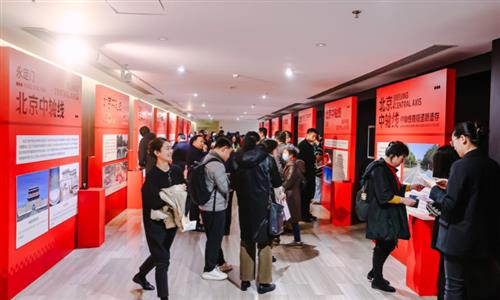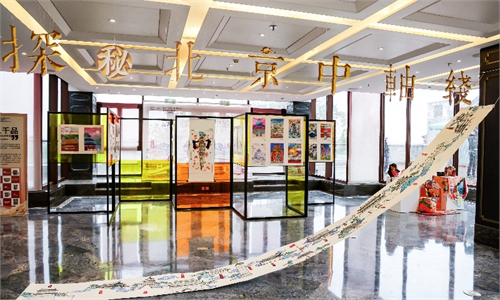ARTS / CULTURE & LEISURE
Central Axis showcases beauty of Beijing
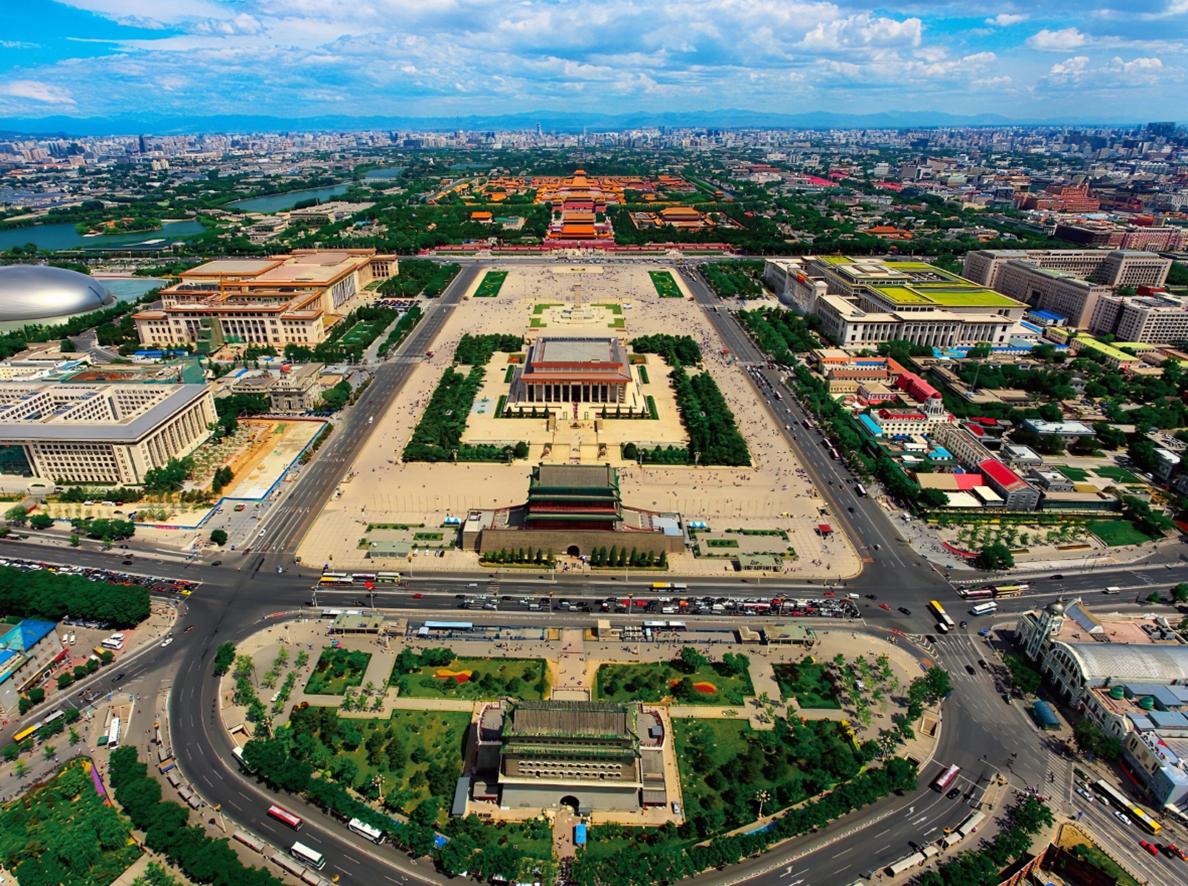
A bird's-eye view of the Beijing Central Axis Photo: Beijing Central Axis World Heritage Application and Protection Office
"Man, I just saw the news, the Beijing Central Axis's World Heritage application succeeded! Let's go to the Bell and Drum Towers to take a look." On the afternoon of July 27, around 2 o'clock, He Linyuan was taking a nap when he heard his neighbor surnamed Long calling him, and immediately got up. They live in Huizhongbeili, a community in Chaoyang district of Beijing, which is a bit of a distance from the Bell and Drum Towers.
On that day, at the 46th session of the UNESCO World Heritage Committee held in New Delhi, India, "The Beijing Central Axis: A Building Ensemble Exhibiting the Ideal Order of the Chinese Capital" was listed as a World Heritage Site, making the total number of World Heritage sites in China reach 59.
Longest urban 'central line'
Mr He is 87 years old this year, and Long is over 60. They both enjoy photography. He was once named by the media for photographing the Bird's Nest (the National Stadium), and Long has won awards in photography contests for his photos about Beijing life. After getting ready and finding their cameras, He followed Long to the Bell and Drum Towers Square, arriving just in time to catch a flash mob celebrating the successful inscription of the Beijing Central Axis. After capturing many wonderful moments, He saw a few foreigners and quickly stepped forward to share his joy. "Today, the Beijing Central Axis has successfully been inscribed as a World Heritage site!"
For years, He has been following the Central Axis's World Heritage application, visiting many of the heritage sites on multiple occasions, taking many photos, and researching the sites along the Axis with his daughter online.
The two elderly men's next stop was Jingshan Park. "The buildings on the Central Axis seen from Jingshan are truly spectacular, leaving one to marvel at their timeless craftsmanship. Let's take a walk along the Central Axis," He chatted with the reporter while catching up with Long, waving his hand as they headed toward Jingshan."
What exactly is this "central line" that made He and Long venture out in the summer heat to explore the Beijing Central Axis?
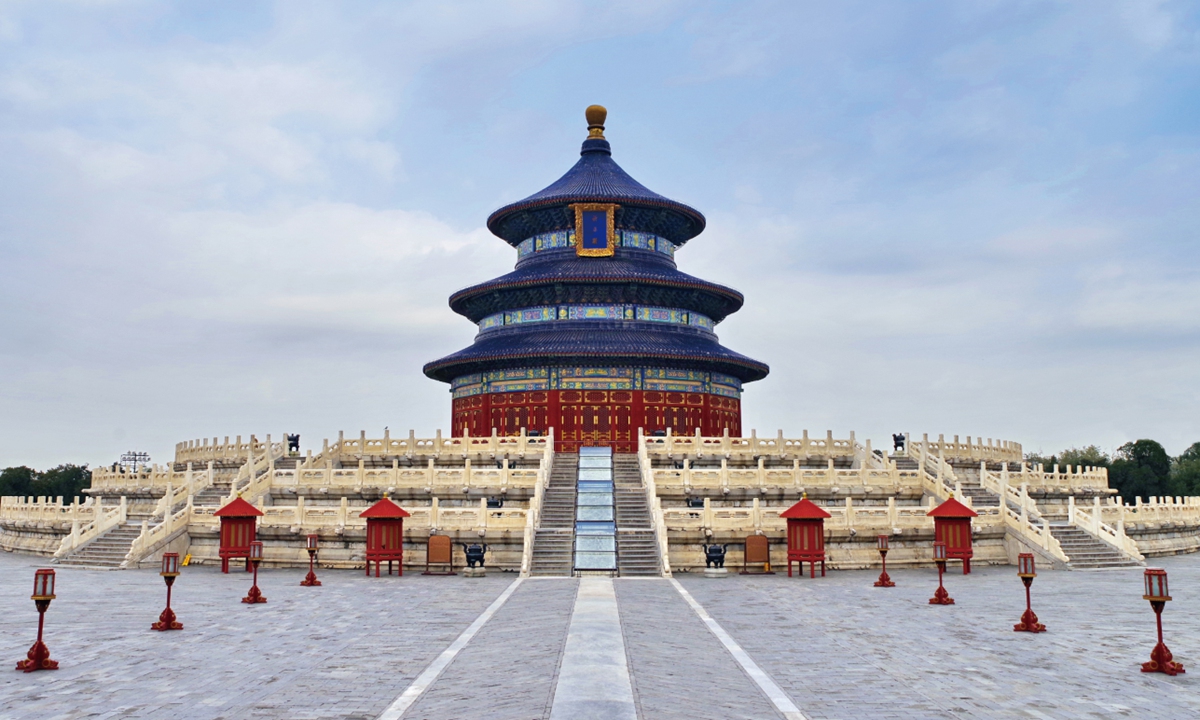
The Temple of Heaven Photo: Beijing Central Axis World Heritage Application and Protection Office
This "central line" runs from north to south through the old city of Beijing, with its construction starting in the 13th century, taking shape in the 16th century, and continuously evolving to form today's 7.8-kilometer-long, the world's longest urban axis."This Yongdingmen Gate has quite a story behind it..." Under He's lens, three performers from the Beijing Dongcheng District Clapper Talk Salon were performing the program Asking for Directions at the Bell and Drum Towers Square. The show uses vivid scenarios of asking for directions to lead the audience on a unique journey of exploring the Beijing Central Axis.
"This program was created a few years ago, specifically for the Central Axis's World Heritage application, and it has been performed many times and won awards." The three performers, all of whom had lived in Dongcheng district in the east of Beijing have a special connection with the Bell and Drum Towers. They told the reporter, "We are particularly excited to perform on the day of the Beijing Central Axis World Heritage inscription, and hope to tell more people the story of the Central Axis in the future."
A 10-minute walk south from the Bell and Drum Towers brings you to Wanning Bridge, built during the Yuan Dynasty (1279-1368). Here, Mrs Wang and her family from Shanxi Province in North China, upon learning of the successful World Heritage application remarked, "'Beijing Welcomes You' is not just a slogan, it will be of increasingly rich content in the future."
According to director general of the Department of Cultural Relics and Historical Sites of the National Cultural Heritage Administration (NCHA), future work will focus on three aspects: the protection, interpretation, and accessibility of the Beijing Central Axis. "The successful World Heritage inscription is not the end but a new beginning."
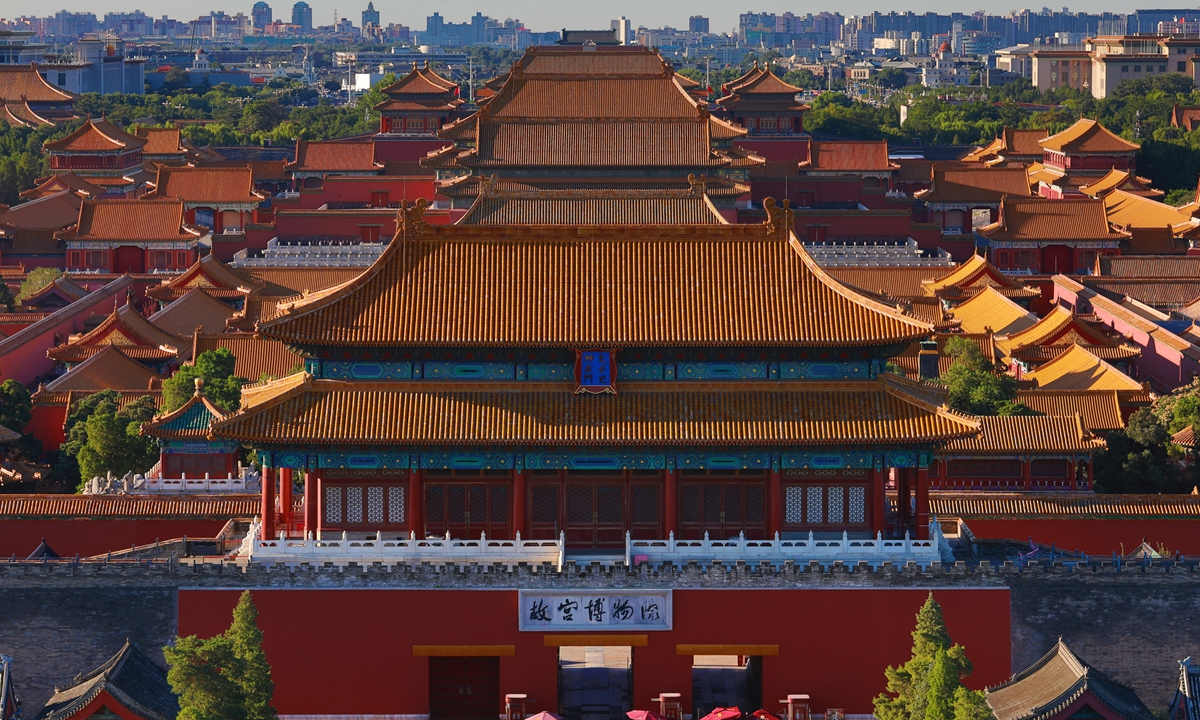
The Forbidden City Photo: Beijing Central Axis World Heritage Application and Protection Office
Ideal capital modelWhen it comes to the Beijing Central Axis, one must mention The Book of Rites - Records of Examination of Craftsman (Zhouli-Kaogongji).
The Book of Rites — Records of Examination of Craftsman was written during the Spring and Autumn (770BC-476BC) and Warring States (475BC-221BC) periods and records the manufacturing and construction systems of the Zhou Dynasty (1046BC-256BC), encompassing 30 categories with "craftsmen" being one of them. Among these, the sections "Craftsmen Build the Nation" and "Craftsmen Manage the Nation" concerning urban construction and planning, serve as the primary theory guiding ancient Chinese city planning. According to The Book of Rites — Records of Examination of Craftsman, the ideal capital's layout should be square, with the palace city at the center, the imperial court in the south, the marketplace and residential areas in the north, the ancestral temple in the east, and the altar in the west. This model reflects the traditional Chinese concept of "choosing the center" and the traditional philosophical emphasis on ritual, which deeply influenced the planning of capitals throughout Chinese history.
Lü Zhou, director of the National Heritage Center at Tsinghua University, and head of the team behind the Beijing Central Axis World Heritage application and protection documents, explained that the location, layout, urban form, and design of the Beijing Central Axis embody the ideal capital model recorded in The Book of Rites—Records of Examination of Craftsman, and showcase the city planning of ancient Chinese dynasties, and witness the development and evolution of the city of Beijing.
Lü stated, "With its grand scale, balanced layout, and well-planned urban landscape, the Beijing Central Axis represents an outstanding example of the traditional Chinese capital's central axis reaching maturity and is also the most complete existing example of traditional Chinese capital central axis architectural complexes."
It is noted that the Central Axis, centered on the north-south road, connects palaces, gardens, altars, temples, and marketplaces, forming a balanced and symmetrical architectural complex. The Tian'anmen Gate, the Duanmen Gate, and the Forbidden City, along with the Bell and Drum Towers and surrounding commercial streets together create a spatial layout "imperial palaces are in the south and the residential area and the marketplace are in the north." The ancestral temple and the Altar of Land and Grain follow the ritual norms of "ancestral temple in the left, altar in the right." The orientation of the roads, the size, height, color, and decoration of the buildings all reflect the ritual and order emphasized in The Book of Rites — Records of Examination of Craftsman.
Architect Liang Sicheng once described in Beijing - An Unparalleled Masterpiece of Urban Planning: "At 8 kilometers long, the world's longest and greatest north-south axis runs through the entire city. The unique grandeur and order of Beijing arise from the establishment of this central axis. The distribution of shapes and space, from front to back, from left to right, is all based on this axis."
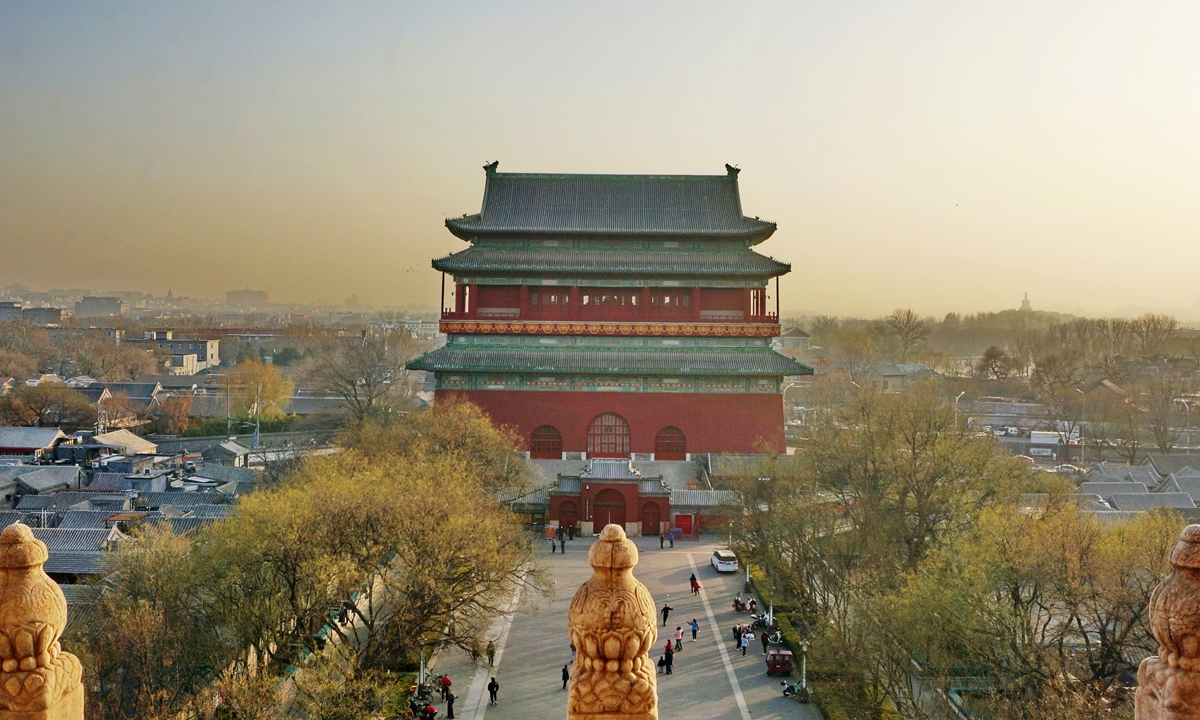
The Drum Tower Photo: Beijing Central Axis World Heritage Application and Protection Office
Majestic landscapeAccording to Article 1 of the Convention Concerning the Protection of the World Cultural and Natural Heritage, the Beijing Central Axis belongs to the "architectural ensemble" type of cultural heritage, consisting of 15 heritage components, which include ancient imperial palace buildings, ancient sacrificial buildings, ancient city management facilities, national ritual and public buildings, and central road relics. Together, they form a landscape rhythm and majestic order of front-to-back undulation and left-right symmetry.
Among these, the ancient imperial palace buildings showcase the site selection and planning of ancient Chinese capitals, traditional imperial rituals, and construction techniques used by the Ming (1368-1644) and Qing (1644-1911) imperial palaces and gardens. The ancient sacrificial buildings exhibit the symmetrical layout of the Beijing Central Axis and carry the ritual traditions of ancient Chinese imperial sacrifices. The ancient city management facilities include structures responsible for the timekeeping and reporting functions of the Ming and Qing cities and the city gates that constitute the layout of the Beijing city walls. The national ritual and public buildings continue the national ritual traditions and represent the process of publicization, witnessing significant historical events. The central road relics are the road and transportation facilities established since the Yuan Dynasty and still in use today.
The UNESCO World Heritage Committee recognizes the integrity, authenticity, and protection management status of the Beijing Central Axis, as well as its continued role as a social and political center in Chinese society, considering it unique in the history of world cities. The Committee believes that the Beijing Central Axis represents a significant contribution to the history of world urban planning through its reflection of Chinese traditional city planning theory and the philosophy of "center" and "harmony."
The Bell and Drum Towers are located at the northern end of the Beijing Central Axis, towering over an ancient neighborhood. The Drum Tower and Bell Towers are arranged north-south, connected by a rectangular square. Climbing the steps to the Drum Tower and looking out from the second floor, one can see a north-south axis running through the city. During the Ming and Qing dynasties, the Bell and Drum Towers were essential city management facilities for timekeeping and reporting, witnessing the traditional lifestyle of timekeeping with bells and drums in ancient China.
Following Du Yanhui, head of infrastructure at Jingshan Park, up the hill from Qiwang Tower to Wanchun Pavilion, the view gradually opens up. "Wanchun Pavilion is the highest point on the Beijing Central Axis and an excellent vantage point for overlooking and experiencing the order of the Central Axis," said Du. From here, one can clearly see the majestic landscape order and strict planning layout of the Beijing Central Axis.
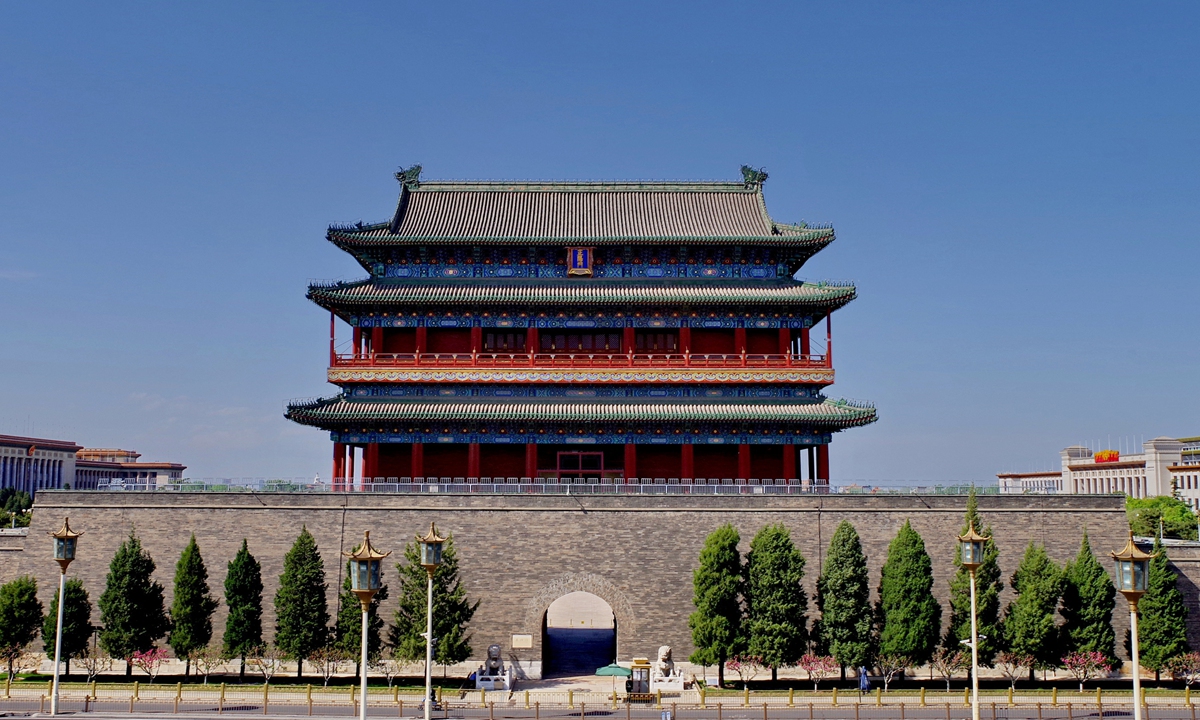
The Zhengyang Gate Photo: Beijing Central Axis World Heritage Application and Protection Office
Archaeological evidenceA car is passing over the bridge, and a child is observing "flood-proof beast" stone sculputures below... Wanning Bridge is the oldest bridge on the Beijing Central Axis, and its location and transportation function have remained unchanged for over seven centuries, providing important physical evidence of the overlapping relationships of the Beijing Central Axis since the Yuan Dynasty.
According to a sign by the bridge, it consists of the bridge structure, "flood-proof beast" sculptures, and remnants of the Chengqing Upper Sluice. The bridge is a single-arch stone bridge with 16 balusters on each side of the bridge deck, and stone retaining walls are set on both sides of the bridge, with "flood-proof beast" sculptures placed on the retaining walls. Standing on the bridge, one can imagine scenes of past Beijing. Today, modern vehicles still travel over the ancient bridge, and tourism, dining, and other industries thrive in the surrounding area.
"Over 700 years old, truly remarkable!" said Xiaohe from Hebei Province, North China while looking at the sign standing by the bridge.
Duan Wenzhi, who is responsible for the maintenance and management of urban roads and bridges in Beijing, participated in the protection and restoration work of Wanning Bridge from 2020 to 2023. "To understand the basic condition of the bridge, we used 3D laser scanning technology to precisely record every detail of the bridge and numbered each inclined stone on the bridge deck for registration, which provided a solid foundation for the restoration plan and daily maintenance management. At the same time, we conducted experiments on the load-bearing capacity of the bridge and the impact of traffic vibrations, using graded loading to avoid damage to the bridge during testing," Duan said.
On the Beijing Central Axis, there is another bridge with the largest single structure, the Zhengyang Bridge. The Zhengyang Bridge is located south of the Zhengyang Gate's Arrow Tower in Dongcheng district at the north end of Qianmen Pedestrian Street, where the bridge over the moat in front of Zhengyang Gate was located. "The Zhengyang Bridge was also the largest and most regulated bridge among the bridges outside the nine gates of the inner city," said Zhang Lifang, associate researcher at the Beijing Archaeological Research Institute.
At the site of the Zhengyang Bridge, deep below the ground surface, there is a large flood-proof beast stone sculpture with a lion-like head and tiger-like body. "As an accessory of the Zhengyang Bridge, the sculpture's large size corresponds with the scale of the Zhengyang Bridge," Zhang said. "Its position has remained undisturbed, providing precise coordinates for us to restore the spatial position of the Zhengyang Bridge."
Zhang explained that this archaeological excavation confirmed the historical existence of the Zhengyang Bridge, determined its precise location, material, and dimensions, providing a basis for the subsequent restoration of the Zhengyang Bridge. "As part of the World Heritage application, archaeology can reveal more historical sites and details, enhancing the integrity and authenticity of cultural heritage."
Long application process
The application process for the Beijing Central Axis to be inscribed as a World Heritage site took 12 years. During the initiation phase (2012-16) in 2012, the NCHA included the Beijing Central Axis in the "China World Cultural Heritage Tentative List" and submitted it to the World Heritage Center for record; during the full acceleration phase (2017-21), efforts were ramped up to further advance the application process.
In the final push phase (2022-2024) in October 2022, the Beijing Central Axis was designated as part of China's 2024 World Heritage nomination project. The NCHA and the Beijing Municipal Government held nine joint ministerial and municipal cooperation meetings to coordinate and address major issues related to the application and inspection. With the approval of the State Council, the NCHA officially submitted the application documents to the UNESCO World Heritage Center on January 30, 2023.
In August 2023, an on-site technical evaluation by the International Council on Monuments and Sites (ICOMOS) was successfully completed. In response to the issues raised during the professional evaluation, the NCHA submitted supplementary materials in November 2023 and February 2024 and dispatched a delegation to Paris to participate in a professional defense, where they provided detailed explanations on the temporal and spatial framework of the Beijing Central Axis. They clearly articulated the continuity of the traditional Chinese capital planning concept and the integrity of the ancient and modern parts, as well as deeply explained the global significance and value of the traditional Chinese philosophical concepts of zhong (center) and he (harmony).
On May 30, 2024, ICOMOS issued its evaluation report, making the highest assessment conclusion that the Beijing Central Axis be directly inscribed on the World Heritage List, laying a solid professional foundation for its successful inscription.
